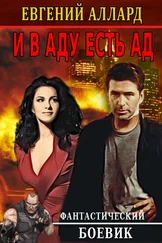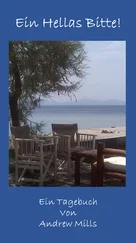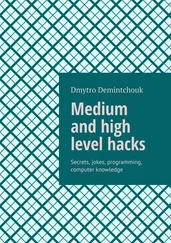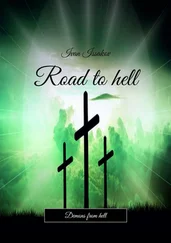Downing shouted into the intercom, “VC… VC! He’s a bad guy. Got a weapons pouch on his chest and some kind of weapon. Come around, sir… come around!”
Vad immediately hit his transmit button to Koranda. “I’ve got one VC in the open, Three Nine. I’m rolling in.”
Nine turned hard right to come back around and set up an engagement solution for his minigun. By that time, the enemy soldier was running like a madman across the field, obviously trying to make it to the tree line before the Loach could come around on his tail and bring its guns to bear. After a fast one eighty, Vad dropped down to about two feet off the ground and twisted on more speed to catch Charlie before he made the trees.
Closing fast, and ready to squeeze back the minigun trigger, Vad was within a millisecond of firing when suddenly the enemy soldier stopped dead in his tracks about a hundred yards in front of Vad’s nose. The man whirled, swung his weapon up to his hip, and ripped off a totally blind burst of .30-caliber carbine toward Vad’s onrushing bird!
One of those wildly fired enemy rounds crashed through the bubble of the aircraft and struck Joe Vad squarely in the forehead. The pilot lurched, instantly dead in his cockpit seat. Flying at at least eighty-five knots and now suddenly uncontrolled, the Loach rolled right, crazily back left again, then violently flipped over onto its back and into the ground. The aircraft exploded in a horrible, fiery blast, instantly killing crew chief Jim Downing.
Gun pilot Koranda was thunderstruck. Watching his scout like a mother hen from fifteen hundred feet above the clearing, he had seen Vad make a normal, calculated gun run on the enemy soldier in the field. Then, a split-second later, he saw his scout lurch wildly, pitch into the ground, and explode in a ball of flame. The VC who had fired the fateful shot? Gone. He had vanished into the jungle.
Three Nine did the only thing he could do. He immediately radioed troop ops and scrambled to the scene what few ARPs the troop had left after recent casualties. When the ARPs arrived, Vad’s twisted Loach was still burning. There was nothing they could do except secure the crash site until the fire subsided enough to remove the bodies.
To describe our feelings at the time is impossible. It was an incredible blow to us all. We had lost Sgt. James L. Downing, the courageous soldier who was my crew chief the day we made the blood drop to the ARPs pinned in the bomb crater. And we had lost WO Henry J. Vad, one of our oldest and most experienced scout pilots, a raucous, rowdy man who helped, in his own zany way, take some of the pressure off the rest of the platoon.
The next day, 7 November 1969, the 1st Aviation Battalion chaplain came to the unit to hold a memorial ceremony. Stationed on the table in the front of the room were the somber symbols of our Outcasts lost to enemy action: The steel infantryman’s helmet with a fresh, new camouflage cover, an immaculately cleaned and oiled M-16 rifle, and a pair of fully laced, spit-shined boots.
As the chaplain spoke his few brief words, everyone had his own private thoughts of Downing and Vad. I thought of their courage and of their fear. I thought that one surely can’t have courage without fear. Like all of us, these two men knew that every day they got in their aircraft, the odds were against them. Yet they flew with the confidence that they’d make it through, and they did the best they could do for their country.
CHAPTER 18
I THINK WE WON
I had been hearing that there would be a Christmas drop. In other words, if your tour in Vietnam ended near the first of January, as mine did on 1 January 1970, the army would make an effort to get you out of country in time to be home for Christmas.
The prospect was sounding better to me every day, but I really couldn’t let myself think about it. A scout pilot whose concentration was distracted by anything—let alone the prospect of going home for Christmas—was looking to get himself and his crew chief killed.
In any case, I was getting very short in country. My picture in the 0 club was moving up to the number one position over the bar, and 1 would be transitioning out of scouts soon and passing on the platoon leadership to my successor.
Charlie, however, was unimpressed. The enemy remained extremely active and was showing himself in the field in even greater numbers. Still, the infamous NVA Dong Nai Regiment remained elusive. These North Vietnamese main force regulars were hitting our 1st Division units with disgusting regularity. Then, almost phantomlike, they would steal away into their sanctuaries, defying our best efforts to find them.
On 10 November, I was flying with a young new crew chief by the name of Bolin (Parker was still out with his neck wound and had, in fact, been sent back to Okinawa for recuperation). We were out on VR in the western Trap, not far from where I was shot down last time near FSB Kien.
I was down low working my patterns when we picked up movement of a single enemy soldier. We jumped him out in the open near a bunker complex. Bolin engaged with his 60 and dropped the man almost where he stood.
That brief encounter suddenly brought about fifteen more enemy soldiers into the fight—more than I could handle with my firepower. So I had Bolin drop a red grenade, and asked my Cobra to hit the smoke.
My gun that day was Bill Church (Three Six). He rolled in immediately and made several passes to hose down the area with rockets and minigun. Then I went back in for a BDA. But the area was still hot—I took so much enemy fire that I had to get back out fast before getting shot to pieces. I realized that we didn’t have enough horsepower to neutralize the contact, so I went up on the FAC push and told Sidewinder that we needed him to bring in fast movers, and whatever else he had available.
After two heavy air strikes, we inserted the ARPs and found a base camp with five enemy KIA. With the extraction of the ARPs, elements of the 2/2 Mech Inf—call signs Label Eight One and Label Eight Nine—were called in to stay in the area and sweep the base camp.
Since we hadn’t known about this enemy base, I flew back out the next day to see if I could pick up anything else around that area. Sure enough, about thirty meters from where Label Eight One was working, we jumped one more enemy soldier. Bolin again quickly dispatched a stream of 60 fire that cut the man down.
Not finding anything more on the ground to warrant their presence, the 2/2 element was extracted on 11 November. We had apparently lost contact with the main enemy force that had occupied the base camp.
Just a week later (17 November), Rod Willis (One Seven), with Sp4 Joe Cook in the back cabin, was working a reconnaissance in the western Trapezoid. I was back at Phu Loi standing by on designated Scramble 1 alert. As usual, I was in the ops bunker monitoring the radios and drinking coffee.
One Seven was working down very low on top of the trees. He was just to the southeast of the Michelin rubber plantation and about four kilometers north and east of FSB Kien. The area was covered by very thick vegetation. The triple-canopy jungle was so dense, in fact, that Willis and his crew chief could catch only fleeting glimpses of the ground as they flew over. At one point, however, the foliage beneath them opened up and they thought they saw evidence of an enemy base camp below.
Rod immediately hauled the OH-6 around to go back for a closer look. As One Seven attempted to hover over the area in question, a fierce explosion suddenly erupted beneath Willis’s Loach. The force of the blast violently rocked the scout ship and sent hot fragments flying, with some pieces of shrapnel catching Joe Cook in the left hand.
(Coincidentally, Cook was the second crew chief to be hit in the left hand in the last two weeks. It had also happened to Ken Stormer. This was mainly the result of how Loach door gunners positioned themselves in the ship; when at the ready with their M-60s, their left hands were forward out on the gun and more exposed.)
Читать дальше












